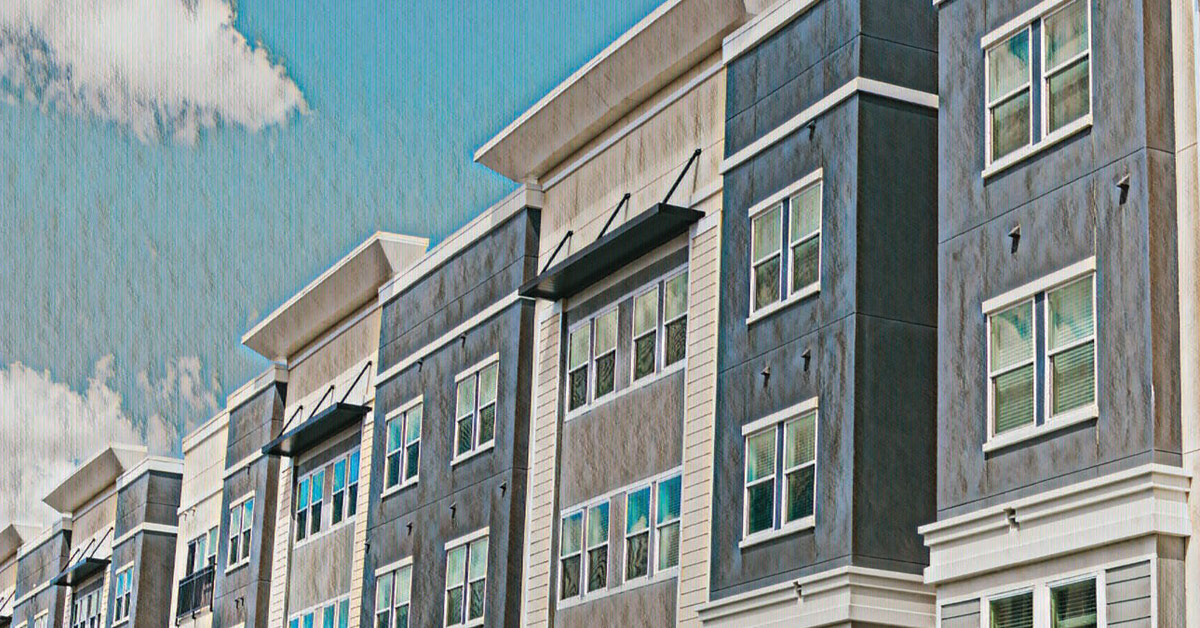Commercial mortgage lenders are frequently asked by new commercial mortgage brokers or crossover originators from the residential sector to explain the mechanics of underwriting and pricing apartment buildings.
It is tempting to assume that a loan for multi-family housing is similar to a residential home-purchase loan. After all, people live in apartments, whereas businesses occupy industrial, retail and office properties. The truth is that apartment loans are not like residential real estate loans.
Residential lenders that specialize in single-family homes tend to be most concerned about a borrower’s income, credit and debt-to-income ratio, but commercial lenders are more interested in understanding an apartment building’s cash flow and expenses. Various calculations go into this analysis. Understanding the math is key to sizing up whether you will be able to close an apartment loan on behalf of your client.
Income and expenses
The first key metric is gross income, which is calculated by multiplying the number of rentable units by their monthly rents. A 10-unit apartment complex with rents fixed at $1,000 per month, for example, would yield $120,000 in gross annual income.
Gross income is only the first step in the evaluation. The next task is to calculate the asset’s net operating income (NOI), which is the property’s gross income minus the cost of its monthly mortgage and any operating expenses. Apartments have several recurring costs, such as taxes, insurance and utilities. Lenders tend to be skeptical of estimates from sellers and real estate agents, and they typically rely on the work of appraisers to more accurately estimate expenses. Appraisers will verify data from the local assessor’s office and utility providers, and they will estimate the operating costs of similar properties in the local market.
Multifamily properties also have several other recurring expenses that are often overlooked or underestimated by both buyers and sellers. Management fees, for example, are frequently underreported. Even if the property is self-managed, a lender will assume a management fee in the range of 4% to 7% of the total monthly rent. The actual fee depends on the size and location of the property.
Even if the property is fully occupied at the time of the loan application, underwriters will factor in a vacancy allowance to account for lost rents. This vacancy factor is based on the historical performance of the property, as well as the specific market conditions.
Lenders will assume an annual expense for repairs and maintenance, which is often in the range of $750 to $1,000 per unit. If the property has serious need of capital improvements, a replacement reserve account also may be required. These are funds that are set aside to replace big-ticket items, such as roofs, appliances, and heating and cooling systems.
Routine administrative expenses, such as legal fees, accounting and business permits, also are included in the calculation. Underwriters may assign an annual cost of as much as $200 per unit for this budget item.
Sustainable debt load
Once you have a solid grasp of the total expenses, you can calculate the property’s net operating income. But NOI is only one side of the equation. Next, lenders will use the NOI to estimate how much annual debt the property can sustain.
Annual debt service represents the total annual payments for the existing or proposed mortgage. For example, if the monthly mortgage payment (including principal and interest) is $10,000, the annual debt service is $120,000. The net income needs to adequately cover this debt. To determine if this is possible, lenders calculate the property’s debt-service-coverage ratio (DSCR).
DSCR is the first of two crucial ratios in an apartment underwriter’s toolbox. It is calculated by dividing the NOI by the annual debt service. Say, for example, that a property has a net operating income of $150,000 and a proposed annual debt service of $120,000. The DSCR is 1.25 ($150,000 divided by $120,000). A DSCR of 1.0 is the break-even point when the income exactly matches the debt service. A number below 1.0 means the property won’t generate enough income to service the debt. Many lenders require a DSCR of 1.25 or higher. If the ratio falls below this figure, the lender will commonly reduce the available loan amount.
The second critical ratio in the toolbox is loan to value (LTV). As with residential loans, LTV represents the size of the proposed loan in relation to the property’s appraised value. Typically, lenders have varying LTV limits depending on their risk tolerance. Some lenders, for instance, may never go higher than 75% LTV. If the property under consideration is valued at $4 million, the maximum loan amount would be $3 million. Lenders, however, will typically use both the DSCR and LTV methods to gauge risk and establish a loan threshold.
Rate of return
Capitalization rates, or cap rates, are the key metric for lenders when estimating property values and investment risks. The cap rate is the rate of return that an investor expects on a cash investment. In apartment deals, today’s investors typically expect a cash return of 4% to 8%.
Cap rates also are important in gauging loan risk. The cap rate is calculated by dividing the net operating income by the current market value. Typically, the higher the cap rate, the lower the value of the asset. Lenders almost always rely on licensed appraisers to gauge the appropriate cap rate, and they also tend to be conservative in their estimate of an asset’s value.
To recap, the value of the apartment building is based on its ability to produce income and will be determined by the NOI and the cap rate. In this respect, apartments are evaluated much differently than owner-occupied homes. The residential appraiser establishes value by looking at sales prices of comparable homes in the area, while the commercial appraiser does so by gauging the property’s ability to generate income for the owner.
As you can see, there’s a fair amount of basic arithmetic employed when analyzing and valuing an apartment property for acquisition or lending purposes. All mortgage brokers should have a firm grasp of these metrics, as well as the true value and risk of the loan proposal, before approaching a lender. ●
Author
-
Stephen A. Sobin is the founder and president of Select Commercial Funding LLC, a nationwide commercial mortgage brokerage company. An industry veteran with more than 35 years of mortgage lending experience, Sobin is a proud member of the InterCapital Group, a nationwide alliance of commercial mortgage professionals. Reach Sobin at (516) 596-8537 or visit selectcommercial.com.
View all posts






